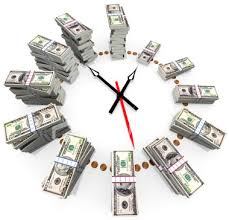“The most powerful force in the universe is Compound Interest” Those were the words of Albert Einstein. He is also said to have called it the eighth wonder of the world. No where does this hold true than in the journey of wealth creation – no matter what your particular understanding or version of wealth may be.
When you save or invest, your money earns interest or appreciates. The next year, you earn interest on your original money and the interest from the first year. In the third year, you earn interest on your original money and the interest from the first two years. And so on. It’s earning interest on the interest you earned yesterday. It’s like a blowing a balloon. You keep putting air into it and it just gets bigger and bigger. However, if you were blowing air into the balloon and at the same time letting the air out from a different hole, the balloon would never become as big as you want it.
Just to demystify the term compound interest further, let’s say you have Kes 100 in the bank, which is giving you an interest of 10% per year. In the first year the interest you will have earned is Kes 10 meaning at the end of the year you will have Kes 110. You can either choose to take out your interest i.e. Kes 10 and spend it or you can choose to invest the remaining Kes 110 again. If you reinvest the Kes 110 for another year you will have Kes 121 at the end of the year. If you reinvest for a third year, you will have Kes 133. Given that your initial investment was Kes 100 you will have basically made Kes 33 in three years simply by reinvesting your money. It really took no effort or too much thought on your end. The returns generated from that continuous process of reinvesting your returns is what is known as Compound interest or compound gains. This is what people who have created wealth for themselves have used and one of the reason people say the rich get richer. These returns you are reinvesting could be from interest from the bank or sacco, profit from sale of shares, dividends from a business etc. As long as the discipline of reinvesting at the very least most of your profits or returns is there, compound interest will work for you.
Just to give you more of an impact of what compound interest can do; Kes 150 put aside daily and invested (this could be money you spend daily on parking, lunch, coffee, cigarettes etc) invested at 10% per annum for 10 years will accumulate to approximately Kes 1,000,000. Time is probably the greatest factor in the success of using Compound Interest. The younger you are the more your money can accumulate. Consider this: Wanjiru, who is 20 years old saves Kes 3,000 per month in an account/investment earning 10% per year. By the time she is 50, she will have accumulated Kes 6.7 mn. Even if she doesn’t contribute another cent after she is 50 years old, the value of her money will be Kes 17 mn by the time she is 60 years old. Compare that to James, who put off saving until he was 35. He is still young enough that becoming a millionaire is within reach, but it will be tougher. Jason would have to contribute approximately Kes 16,000 per month to earn Kes 6.7 mn million by age 50. Although Wanjiru invested less her money had more time to grow, or compound.
It is common to hear people say that they do not have enough money to invest. With Compound interest a little goes a long way. Also remember as the money accumulates you will have access to more investment opportunities that can give you higher returns. Research done whilst writing this article indicates that the 10% per annum return I have used in the examples today is what some SACCO’s are likely to pay as dividends for this year. Consistency is always key. If you decide to save Kes 1000 per month do it consistently. You are better off saving a lower amount but one that you can do consistently. Think of this saving as you would rent – money that is not there to be spent. Start as soon as you can and save what you can to let compounding work its magic
Waceke Nduati –Omanga| waceke@centonomy.com| Twitter @centonomy.

